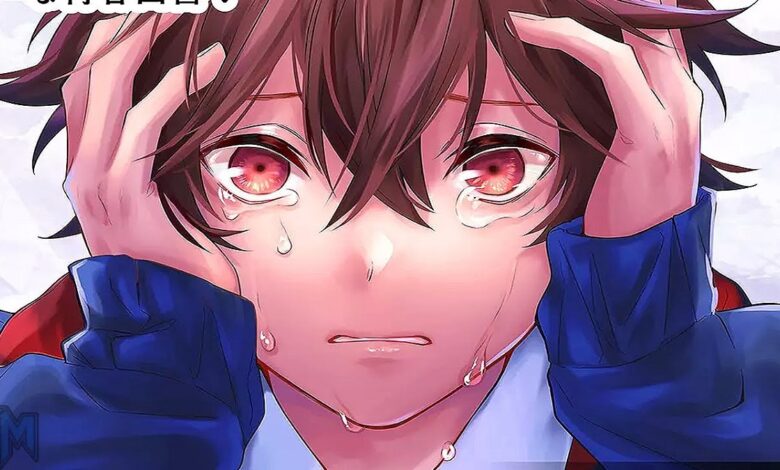Unveiling the Secrets of Sensitive Boy Manga:

Have you at any point been brought into the universe of sensitive boy manga? These convincing and genuinely charged stories dig profound into the intricacies of youthful male heroes, catching the crude embodiment of their battles, feelings, and connections. From tragic sentiments to extraordinary transitioning stories. Sensitive Boy Manga offers a special window into the internal conflict and development of its characters. Yet, what precisely separates these manga from their partners, and how would they resound with perusers on such a significant level? Go along with us as we set out on an excursion to uncover the mysteries behind this enrapturing class and find what makes it so compelling to fans all over the planet.
Introduction: Exploring the rise of sensitive boy manga
As of late, there has been a critical ascent in the prominence of sensitive boy manga, a classification that dives into close to home and mental subjects with an emphasis on male heroes. This shift mirrors a more extensive cultural change in perspectives towards manliness and close to home weakness. Touchy kid manga offers nuanced depictions of male characters managing complex sentiments, connections, and self-awareness, furnishing perusers with engaging and provocative accounts.
One key variable adding to the developing allure of sensitive boy manga is its capacity to challenge conventional orientation generalizations and proposition different portrayals of manliness. By exhibiting male characters who straightforwardly express their feelings and face their internal struggles, these accounts offer a more comprehensive and compassionate vision of masculinity. In doing as such, touchy kid manga not just resounds with perusers who look for valid narrating yet additionally cultivates significant discussions about psychological wellness, cultural assumptions, and the advancing idea of manliness.
History: Origins and evolution of sensitive boy manga
Sensitive Boy Manga, otherwise called shonen simulated intelligence or young men’s affection manga, has a rich and complex history that has developed throughout the long term. It began in Japan during the 1970s and was at first described by its heartfelt and profound topics based on connections between male characters. The class acquired prominence through serialized magazines like June and has since extended to incorporate an extensive variety of subgenres, including both carefree sentiments and more experienced, emotional stories.
The advancement of sensitive boy manga reflects changing cultural mentalities towards LGBTQ+ portrayal in Japan. At first viewed as no, these accounts in the long run found a devoted fanbase whose interest for different, comprehensive substance provoked the business to deliver more nuanced and genuine depictions of same-sex connections. This development grandstands how workmanship can both reflect and impact social change, making sensitive boy manga a significant piece of Japanese mainstream society as well as LGBTQ+ portrayal around the world.
Themes: Common themes and motifs in sensitive boy manga
In sensitive boy manga, normal subjects and themes rotate around contemplation, close to home weakness, and the complexities of relational connections. These accounts frequently dig into the internal conflict and battles of male characters as they explore cultural assumptions and their own feelings. Subjects like self-disclosure, personality emergency, and the effect of injury are pervasive in sensitive boy manga, adding profundity to the account and reverberating with perusers who appreciate nuanced character advancement.
Moreover, themes, for example, cherry blooms representing passing magnificence or downpour addressing despairing are repetitive in this class. These viewable signs mix the narrating with imagery and inspire a feeling of graceful responsiveness that lifts the close to home reverberation of the stories. Moreover, subjects like pathetic love or implicit sentiments add layers to character elements, making piercing minutes that investigate the intricacies of human association in a profoundly moving manner.
Characterization: Analysis of key character traits and development
In the realm of touchy kid manga, character improvement is a key component that keeps perusers connected with and put resources into the storyline. One of the most captivating angles is the investigation of key person qualities and how they advance after some time. For instance, the hero might begin as a meek and contemplative individual, yet through different encounters, they continuously foster boldness and certainty. This change permits perusers to observe their development and constructs a profound close to home association with the person.
Investigating unseen struggles is urgent in grasping person advancement. Characters frequently battle with their own instabilities, fears, or past injuries which shape their way of behaving and navigation. By diving into these intricacies, sensitive boy manga not just offers a more sensible depiction of human instinct yet additionally permits perusers to connect with these characters on a significant level. Understanding how these inside fights impact character movement adds profundity to the story and keeps perusers enamored.
Impact: Influence of sensitive boy manga on popular culture
Sensitive Boy Manga, with its accentuation on compassionate, sincerely canny male heroes, has been a main impetus in reshaping mainstream society’s view of manliness. The impact of these manga series should be visible in the development of additional different and complex male characters in established press, testing conventional generalizations and giving portrayal to delicate young fellows. Furthermore, the subjects of weakness, psychological wellness mindfulness, and relational connections investigated in sensitive boy manga have reverberated profoundly with crowds all over the planet, prompting a more noteworthy acknowledgment and comprehension of feelings and inward battles.
Sensitive Boy Manga plays had a significant impact in starting significant discussions about harmful manliness and the cultural tensions put on young men and men to adjust to unbending orientation standards. By refining male characters who straightforwardly express their sentiments and weaknesses unafraid of judgment or mocking, this kind has made ready for a more comprehensive and humane way to deal with manliness in mainstream society. As this groundbreaking effect keeps on unfurling across different types of media, it is clear that touchy kid manga isn’t just a social peculiarity yet in addition an impetus for positive change in the public eye’s view of manliness.
Conclusion:
All in all, the getting through allure and meaning of sensitive boy manga lies in its capacity to resound with perusers on a profound close to home level. These accounts frequently dig into complex subjects like weakness, fellowship, and self-disclosure, which are widespread and ageless. By depicting male characters who embrace their responsiveness and explore through life’s difficulties with sympathy and empathy. Sensitive Boy Manga offers a reviving option in contrast to conventional depictions of manliness. The class gives a stage to investigating issues connected with psychological wellness and cultural assumptions, breaking down generalizations and offering a more comprehensive portrayal of male encounters.




